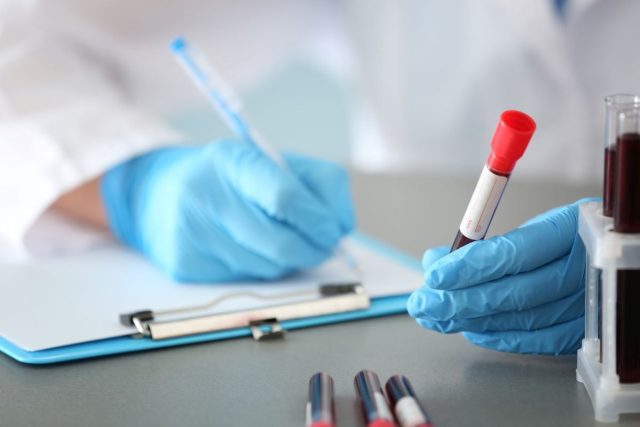Significant associations seen for all Alzheimer disease plasma biomarkers in late life with late-life dementia
By Elana Gotkine HealthDay Reporter
THURSDAY, Aug. 1, 2024 (HealthDay News) — Plasma biomarkers of Alzheimer disease (AD) neuropathy increase with age and are associated with known dementia risk factors, according to a study published online July 28 in the Journal of the American Medical Association to coincide with the Alzheimer’s Association International Conference, held from July 28 to Aug. 1 in Philadelphia.
Yifei Lu, Ph.D., from the Gillings School of Global Public Health at the University of North Carolina at Chapel Hill, and colleagues examined temporal plasma biomarker changes and their association with all-cause dementia among 1,525 participants from the U.S.-based Atherosclerosis Risk in Communities study. Plasma biomarkers were measured using stored specimens collected in midlife (mean age, 58.3 years) and late life (mean age, 76.0 years); participants were followed until a mean age of 80.7 years. The associations of biomarkers with incident all-cause dementia were assessed in a subgroup of 1,339 individuals.
Of the 1,525 participants, 16.5 percent developed dementia. The researchers found that from midlife to late life, there was a decreasing ratio of amyloid-β 42 to amyloid-β 40 (Aβ42:Aβ40) and increasing phosphorylated tau at threonine 181 (p-tau181), neurofilament light (NfL), and glial fibrillary acidic protein; more rapid changes in biomarkers were seen for participants harboring the apolipoprotein E epsilon 4 allele. Long-term associations were seen for AD-specific biomarkers in midlife with late-life dementia (hazard ratio per standard deviation [SD] lower Aβ42:Aβ40 ratio, 1.11; per SD higher p-tau181, 1.15). Significant associations were seen for all plasma biomarkers in late life with late-life dementia, with the largest association for NfL (hazard ratio per 1-SD increase, 1.92).
“The association of AD-specific biomarkers with dementia starts in midlife, whereas late-life measures of AD, neuronal injury, and astrogliosis biomarkers are all associated with dementia,” the authors write.
Two authors disclosed ties to the biopharmaceutical industry.
Copyright © 2024 HealthDay. All rights reserved.



















